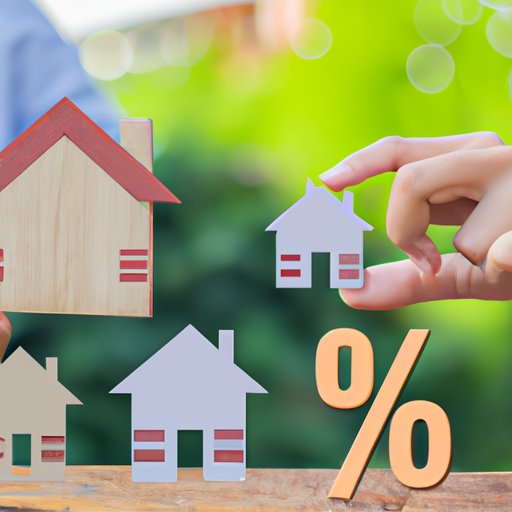Introduction
Buying a house is an exciting milestone in life, but it also comes with a lot of questions – one of the biggest being “how much can I afford to buy a house?” Determining the answer to this question requires looking at your current financial situation and assessing your budget for additional expenses. This article will cover topics related to calculating your maximum home price, creating a realistic home affordability plan, and exploring options to make home ownership more affordable.
Calculating Your Maximum Home Price Based on Your Income and Debt
When it comes to buying a house, the first step is understanding your income. This includes both your pre-tax salary and any other sources of income such as investments or rental properties. Once you have a good idea of your total income, you can then move on to calculating your debt-to-income ratio. This is done by adding up all of your monthly debt payments (such as student loans, credit cards, auto loans, etc.) and dividing them by your gross monthly income. Generally speaking, lenders prefer to see a debt-to-income ratio of 36% or less before approving a loan.
Once you have a good understanding of your debt-to-income ratio, you can then estimate your maximum home price. This calculation is based on your total income, monthly debts, and the amount of money that you are able to put down as a down payment. Generally speaking, lenders prefer to see a down payment of 20%, but this can vary depending on your specific situation. Once you have considered all of these factors, you can then use online calculators or speak with a mortgage lender to get a better idea of what your maximum home price should be.

How to Determine Your Home Buying Budget
Before you start shopping for a home, it’s important to take into account additional expenses that come along with homeownership. These include things like property taxes, homeowner’s insurance, utilities, and maintenance costs. Depending on the size of the home and location, these costs can add up quickly and should be taken into consideration when budgeting for a home purchase.
It’s also important to set realistic goals for yourself when buying a home. According to a study conducted by Zillow, “buyers who spend more than 30% of their gross income on housing costs tend to struggle financially and may not be able to maintain their lifestyle in the long term.” So, it’s important to keep this in mind when setting your budget and making sure that you don’t overextend yourself.

Estimating Monthly Mortgage Payments Before Buying a House
Once you have a good idea of your maximum home price, you can then begin to look at interest rates and down payment amounts. Interest rates are determined by the type of loan that you choose and can vary depending on your credit score and other factors. It’s important to shop around and compare different lenders to find the best rate possible.
In addition to interest rates, it’s also important to consider the amount of money that you are able to put down as a down payment. Generally speaking, the higher the down payment, the lower your monthly payments will be. Furthermore, you will also need to factor in closing costs which can range anywhere from 2-5% of the total purchase price of the home.

Creating a Realistic Home Affordability Plan
Once you have a better understanding of your maximum home price, interest rates, and closing costs, it’s time to create a realistic home affordability plan. This involves prioritizing your financial goals and evaluating different loan options. For example, if you are looking to save money in the long run, then you may want to consider an adjustable-rate mortgage (ARM) or a 15-year fixed-rate mortgage.
It’s also important to remember that there are many government programs available to help make home ownership more affordable. These include things like FHA loans, VA loans, USDA loans, and more. Each of these programs has its own requirements and benefits, so it’s important to do your research and determine which one is best for you.
Conclusion
Buying a house is an exciting milestone, but it’s important to understand how much you can afford before making a purchase. This involves looking at your income, calculating your debt-to-income ratio, and taking into account additional expenses. It’s also important to estimate your monthly mortgage payments, create a realistic home affordability plan, and explore government programs to make home ownership more affordable. By following these steps, you can ensure that you are making an informed decision when it comes to purchasing a home.
(Note: Is this article not meeting your expectations? Do you have knowledge or insights to share? Unlock new opportunities and expand your reach by joining our authors team. Click Registration to join us and share your expertise with our readers.)
